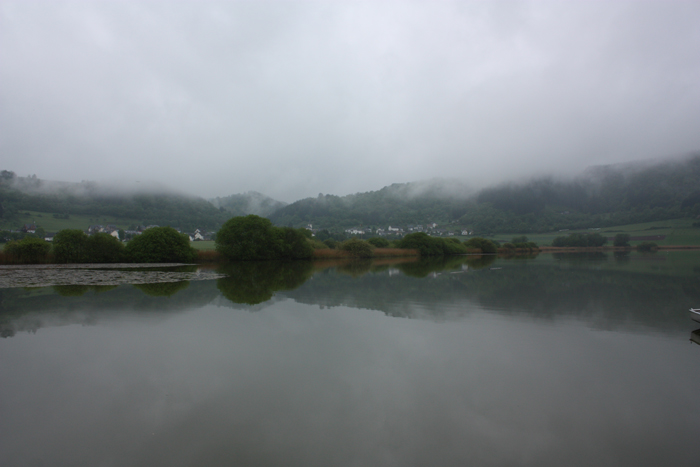Ancient 'Big Freeze' Rapidly Wiped Out European Forests

A major cold age that descended on Earth nearly 13,000 years ago is linked with a widely studied and debated mass extinction of large mammals, such as ground sloths, in North America. But the effects of this so-called "Big Freeze" weren't limited to North America: New research shows that forests throughout Europe vanished within two centuries of the onset of this frigid time.
These findings highlight the way the environment can shift drastically over the course of just a few human lifetimes, the researchers said.
The last major cold age on Earth was a 1,100-year-long chill that began more than 12,800 years ago. The period, sometimes nicknamed the "Big Freeze," is technically known as the Younger Dryas. (This era was not a glacial period, often called an ice age, but rather a cold time in the relatively warm spans between glacial periods.)
Researchers have suggested these centuries of cold helped wipe out most of the large mammals in North America as well as the so-called Clovis people, which archaeologists had long thought were the first Americans. A great deal of controversy exists regarding the origins of this cold — the prevailing theory is that it was triggered by a giant flood of Arctic meltwater, although others claim it was caused by a meteor impact.
The Big Freeze affected not only North America, but also Europe.
"There was a substantial change in climate," said study co-author Dirk Sachse, a paleoclimatologist and organic geochemist at the University of Potsdam in Germany. "It got much colder — between 4 and 6 degrees Celsius [7 to 11 degrees Fahrenheit] over the course of hundreds of years. Winters were very cold and got much longer, and summers were much shorter than before."
Puzzling delay
Get the world’s most fascinating discoveries delivered straight to your inbox.
Analysis of fossils also revealed that after this cold began, "maybe half of the forests in certain locations in Europe were gone, replaced by grasslands," Sachse said.
Past research suggested there might have been a delay between the start of the cooling and the dramatic effects seen on forests in Europe. However, it was uncertain whether this delay was real — it might have been due to dating methods' unclear results, Sachse said.
"This delay was about 200 years long, and puzzling to a lot of people," Sachse said.
In 2013, scientists discovered evidence that this delayed response actually happened — a layer of volcanic ash from an eruption in Iceland found in ancient mud on the floor of Lake Meerfelder Maar in western Germany. This ash was the same as ash seen in Greenland ice cores that also recorded when the cooling began. (Ice cores are cylinders of ice drilled from glaciers and ice sheets that allow scientists to examine the layers of ice deposited over hundreds and thousands of years, akin to tree rings, that record what conditions were like on Earth at the time.) When combined, these two lines of evidence confirmed that changes seen in Europe's forests occurred about 170 years after the chilling started. [7 Ways the Earth Changes in the Blink of an Eye]
To learn more about this delay, Sachse and his colleagues analyzed more sediment from Lake Meerfelder Maar. They examined the organic remains of land and aquatic plants in the mud, focusing on the levels of deuterium they possessed. Deuterium is an isotope of hydrogen — its atoms each possess a single proton like regular hydrogen, but they differ in that each also possesses a neutron.
Water molecules are made from hydrogen and oxygen. Water made with deuterium is less likely to evaporate than water made with regular hydrogen, since deuterium is heavier than regular hydrogen. This means deuterium-laden "heavy water" is less likely to evaporate from land plants, so it builds in their systems when environments are drier. On the other hand, aquatic plants do not lose water via evaporation because they are surrounded by water, so the ratio between heavy and regular water stays relatively unchanged in their systems.
The researchers discovered that about 170 years after temperatures fell in Europe, land-plant remains had greater levels of deuterium than aquatic plant molecules did, suggesting the environment became much drier. As a result, forests vanished and grasslands grew.
Rapid change
Prior studies found that 170 years after the onset of cooling, North Atlantic winter sea ice reached southward enough to channel dry polar air into western Europe, thus drying out the area.
"Explaining how this time lag happened was exciting," Sachse said.
The results, detailed online Jan. 19 in the journal Nature Geoscience, show that changes in climate can happen rapidly, when compared to geologic timescales."In just a few human lifetimes, the environment can change abruptly and quite significantly," Sachse said. "Changes in the water cycle can really amplify the environmental effects of changes in temperature."
In the future, the researchers want to determine how much drier Europe got because of the Big Freeze.
"The water-cycle changes we observe are a consequence of the temperature changes," Sachse said. "This makes this work relevant for better understanding future climate change."
Follow us @livescience, Facebook & Google+. Original article on LiveScience.



